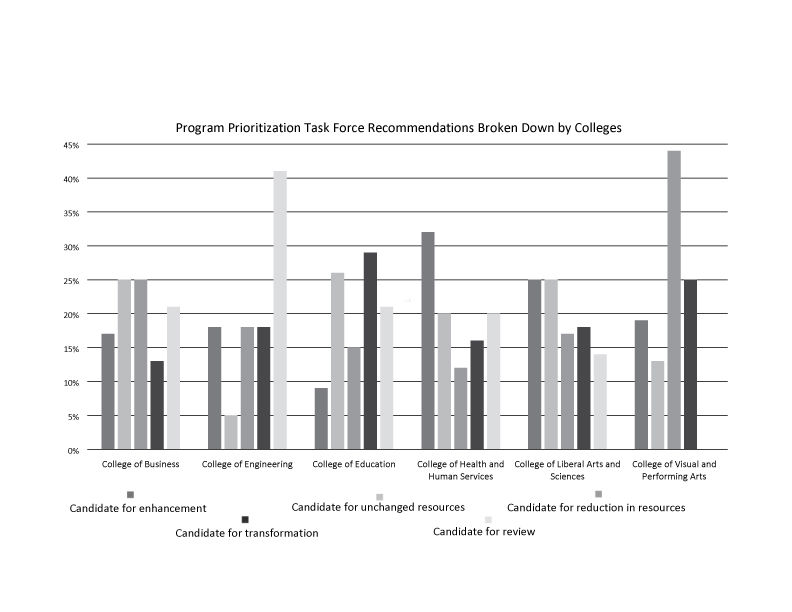Feedback on reports available via website
The categorization of academic programs from each college. No programs from the College of Visual and Performing Arts were recognized as a candidate for review.
May 5, 2016
Prior to beginning the program prioritization process, NIU employees gained guidance from other higher education institutions like Indiana State University, Lehman College and Boise State University.
Program prioritization, which began in 2014, uses task forces to create reports that review 223 academic programs and 236 administrative programs to influence the allocation of university funds. The reports were based on narratives submitted by program leaders in November.
Programs were placed in one of five categories determining resource allocation.
In October 2015, a group of representatives from five higher education institutions visited NIU to discuss their experiences with program prioritization, each being at a different point in the process.
School representatives were able to provide training sessions for the program authors of the narratives, as well as discuss the successes and shortcomings of their processes.
“One of the most helpful things were the program author training sessions,” said Melanie Magara, chair of the program prioritization communications support team. “[Representatives] said ‘Hey, we’ve been through this; we’ve read program narratives. Let us give you some tips on what makes a compelling case and what doesn’t.’”
In addition to the institutions’ feedback, a group of 11 NIU employees attended the Academic Impressions Conference in October 2014, which focused on the processes of program prioritization.
The 12 employees, along with two students, became the program prioritization coordinating team. The team has been tasked with “[working] with members of the university community to develop and implement a transparent program prioritization process,” according to the program prioritization website.
Employees involved with program prioritization also turned to reports that have been published about the program prioritization process. These reports listed on NIU’s website include “Meeting the Challenge of Program Prioritization” and Boise State University’s program prioritization website.
Feedback on the program reports will be open until May 23.







